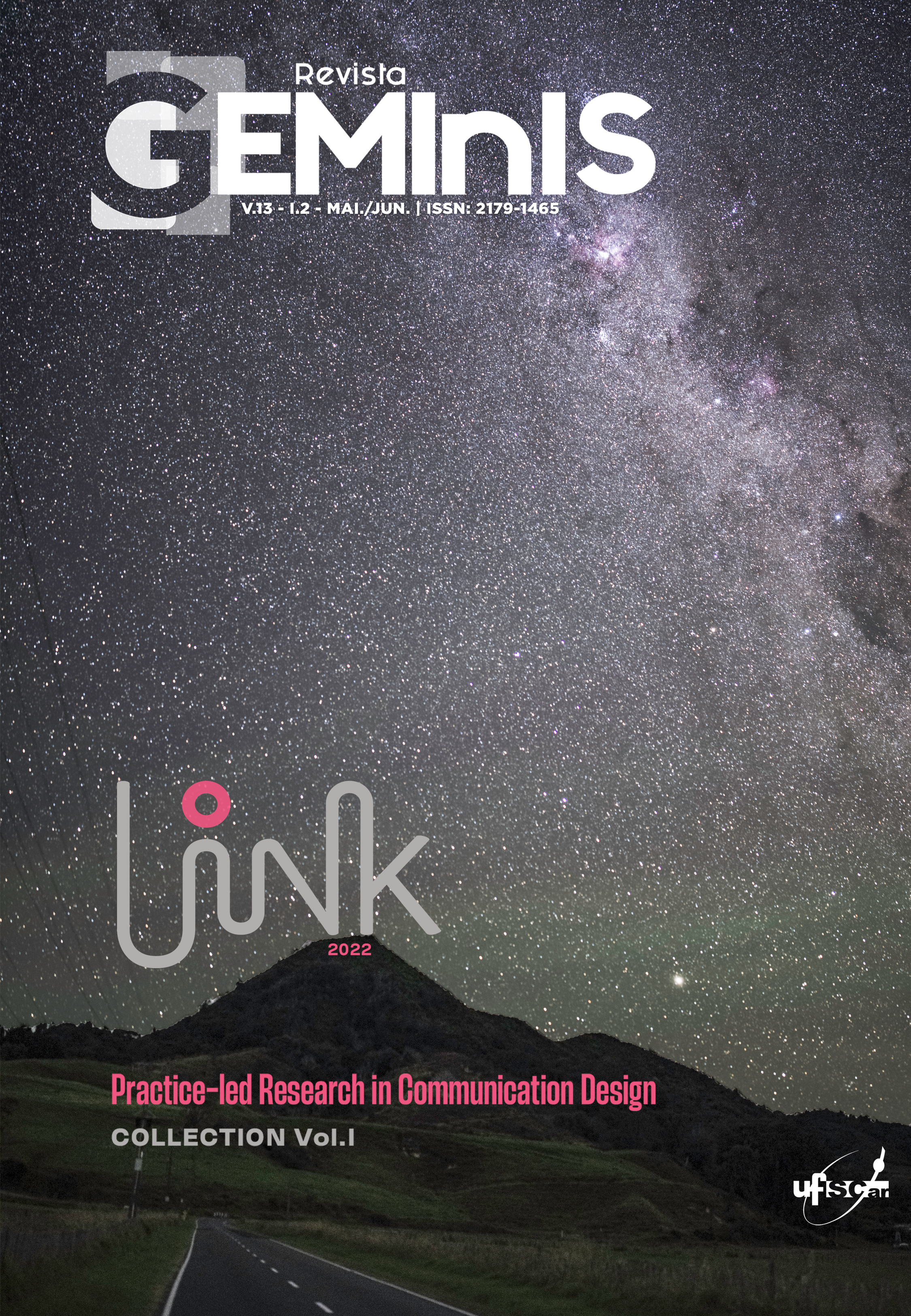Revealing embedded power: Collage and disruption of meaning
DOI:
https://doi.org/10.53450/2179-1465.RG.2022v13i2p94-104Palavras-chave:
Analogue processes, Body as archive, Collage, Image and power, Practice methodologyResumo
Analogue materials and collage are fundamental to my research and practice. They assist in examining and peeling off layers embedded within the printed image. The human body represents power, and an image featuring a privileged male body is a representation of that power (Brauer and Callen, 2008). Photographs and visual presentations of these bodies are bound by codes set by a culture in a certain space and time. These codes have limitations, and at the same time possibilities, manufactured by media and technology within which they function and refer. New presentations are effectually re-presentations, partially echoing previous utterances of power (Barthes, 1977). As a result, the image of a body becomes an archive, a discursive document covered in layers, and the analysis of that image lays bare its textuality, and collage helps investigate this multi-layered corporeal object— a palimpsestuous weaving of ocular representation through discourse, culture, and technology, to reveal its meanings and semiotic signs. This way, collage becomes an appropriate practice method to disentangle and highlight, and at the same time to manipulate and disrupt— an effective methodology to peel and strip the embedded meanings and significations within an image
Downloads
Referências
Barthes, R. (1977). Image, Music, Text. Hill and Wang.
Benjamin, W. (2005). Walter Benjamin: Selected Writings, Volume 2: Part 2 (M. W. Jennings, H. Eiland, & G. Smith, Eds.). Belknap Press.
Brauer, F., & Callen, A. (Eds.). (2008). Art, sex and eugenics: corpus delecti. Ashgate.
Cooley, C. H. (1983). Human nature and the social order. Transaction Books.
Craig, B. (2008). Collage: assembling contemporary art. Black Dog Publishing.
Foucault, M. (1977). Language, counter-memory, practice: selected essays and interviews. Cornell University Press.
Holdcroft, D. (1991). Saussure: signs, system, and arbitrariness. Cambridge University Press.
Jeppesen, T. (2008). Disorientations: art on the margins of the “contemporary.” Social Disease.
Laclau, E., & Mouffe, C. (1985). Hegemony and socialist strategy: towards a radical democratic politics. Verso.
Kotik, C. 1978). Jiří Kolář: transformations : with an essay. Albright-Knox Art Gallery.
Kristeva, J. (1969). Séméiotike: Recherches pour une sémanalyse. Editions du Seuil.
MacKenzie, C. (2000). Imagining oneself otherwise. In C. Mackenzie & N. Stoljar (Eds.), Relational autonomy: Feminist perspectives on autonomy, agency, and the social self (pp. 124–150). New York: Oxford University Press.
Maxwell, A. (2008). Picture Imperfect: Photography and Eugenics, 1879-1940. Sussex Academic Press.
Merleau-Ponty, M. (2002). Phenomenology of Perception. Psychology Press.
Mulvey, L. (1975). Visual pleasure and narrative cinema. Screen, 16(3), 6–18. https://doi.org/10.1093/screen/16.3.6
O’Reilly, S. (2008). Collage: Diversions, contradictions and anomalies, in Craig, B. (2008). Collage: assembling contemporary art. Black Dog Publishing.
Potocka, M. A. (Ed.). (2012). Jiří Kolář: kolaż z łasiczką = Collage with an ermine. Museum of Contemporary Art in Krakow.
Schwitters, K. (2021). Myself and my aims : Writings on art and criticism. University of Chicago Press.
Taylor, B. (1986). Collage: the making of modern art. Thames & Hudson.
Waldman, D. (1992). Collage, assemblage, and the found object. HNAbrams.
Downloads
Publicado
Como Citar
Edição
Seção
Licença
Copyright (c) 2022 George Hajian

Este trabalho está licenciado sob uma licença Creative Commons Attribution-ShareAlike 4.0 International License.
Autores que publicam nesta revista concordam com os seguintes termos:
a. Autores mantém os direitos autorais e concedem à revista o direito de primeira publicação, com o trabalho simultaneamente licenciado sob a Licença Creative Commons Attribution que permite o compartilhamento do trabalho com reconhecimento da autoria e publicação inicial nesta revista.
b. Autores têm autorização para assumir contratos adicionais separadamente, para distribuição não-exclusiva da versão do trabalho publicada nesta revista (ex.: publicar em repositório institucional ou como capítulo de livro), com reconhecimento de autoria e publicação inicial nesta revista.


